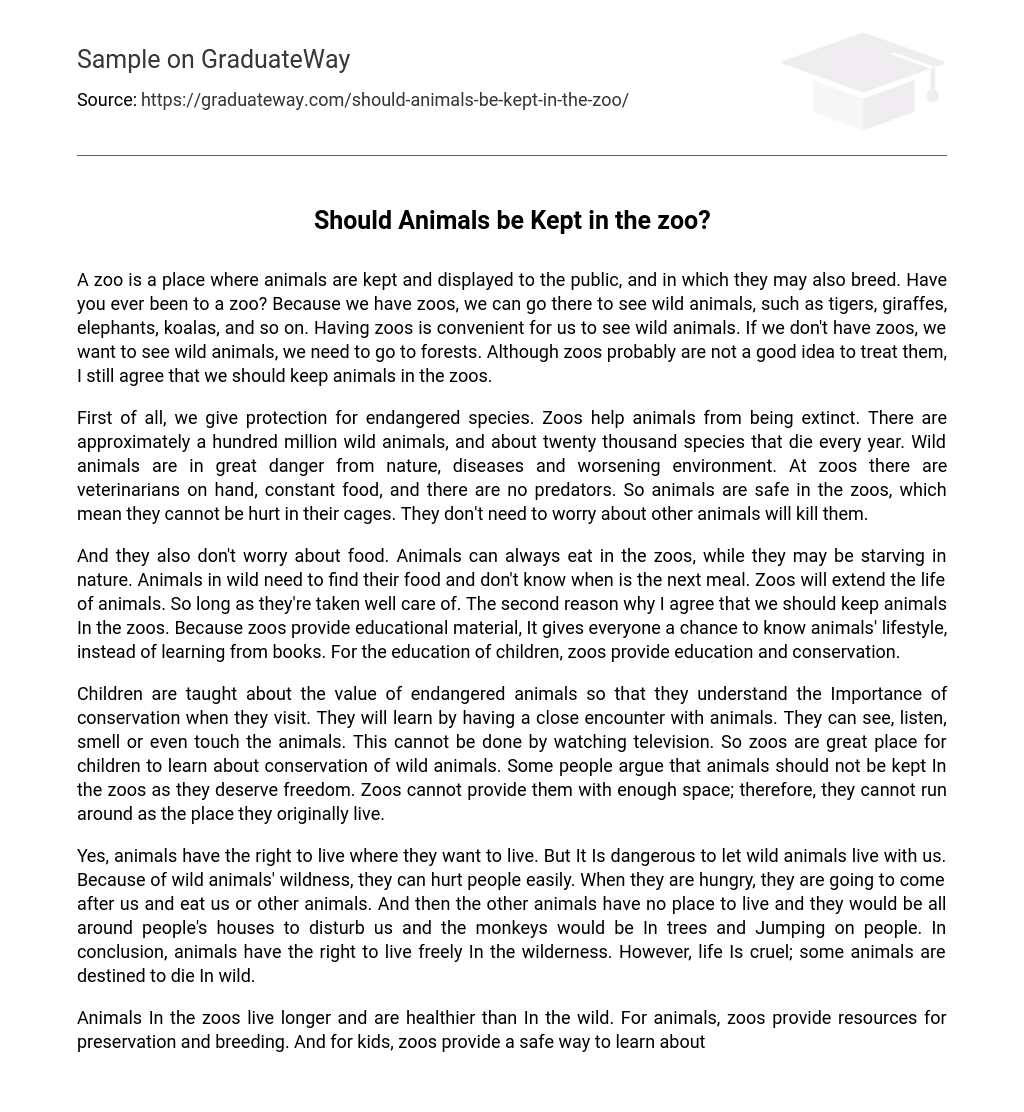Zoos are establishments designed for the purpose of accommodating, showcasing, and breeding animals for the public to observe. They offer a chance to see rare and fascinating creatures like tigers, giraffes, elephants, and koalas. Without zoos, encountering these animals would mean venturing into forests. Despite potential concerns about how well animals are taken care of in captivity, I remain in favor of the presence of zoos.
Zoos play a crucial role in safeguarding endangered species and averting their extinction. Annually, nearly 20,000 species and about 100 million wild animals face risks of death due to factors such as natural dangers, illnesses, and environmental decline. Nevertheless, zoos provide a secure refuge where animals benefit from continuous veterinary care, food availability, and protection against predators. Consequently, within the boundaries of zoos, animals experience a sense of safety and are spared from harm caused by other creatures.
Animals in zoos are not concerned about their food supply, unlike those in the wild who may face starvation. Zoos guarantee regular meals for animals, which helps extend their lifespan. Additionally, zoos serve as important educational resources by allowing individuals to directly experience and comprehend the lives of animals, rather than relying solely on books. Especially for children, zoos play a vital role in providing knowledge about wildlife and encouraging conservation efforts.
Visiting zoos imparts knowledge to children regarding conservation and the significance of endangered animals. Through sight, sound, smell, and touch, interacting with animals provides a unique learning experience that television cannot match. Zoos serve as valuable educational settings for kids to gain insights into wildlife preservation. However, there are individuals who object to the confinement of animals in zoos due to their belief in granting them freedom. The limited space within zoos restricts animals from freely roaming as they would in their natural habitats.
Although animals have the freedom to choose their habitat, coexisting with wild animals can be dangerous as they often pose a threat to humans and other animals due to their natural instinct. Hunger can drive them to attack and consume humans or other animals, disrupting the living environment for both humans and other creatures by encroaching upon human residences. Monkeys, for example, might be observed in trees or even jumping on people. Ultimately, while it is crucial to acknowledge that animals should have the freedom to reside in their natural habitats, it is also important to recognize that some animals are destined to perish in the wilderness.
Zoos provide a secure and sheltered setting for animals, resulting in extended and improved lives in comparison to their counterparts in the wild. Additionally, zoos play a crucial role in conservation and breeding efforts, benefiting both animals and children. Endangered species particularly reap the advantages of the safety provided by zoos. Furthermore, these institutions offer educational opportunities that allow individuals to learn about animals and comprehend the importance of preservation. While some argue against keeping animals captive due to concerns about freedom, it is essential to consider the potential hazards of allowing wild animals to coexist with humans. The disruptions caused by human activities and risks posed by these animals underline the necessity of zoo environments. Although it would be ideal for all creatures to live freely in their natural habitats, unfortunately, some are destined to perish there. Ultimately, zoos ensure that animals receive protection and care, leading to prolonged lifespans and enhanced health.





